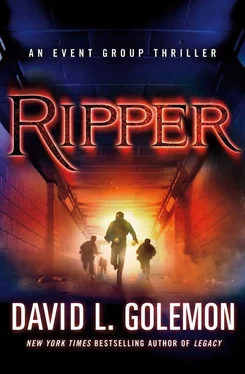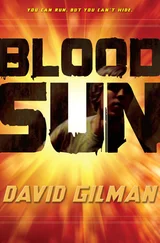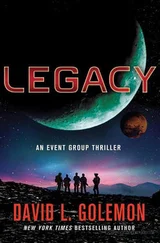“I see your point,” Niles said as he watched Europa placing her programs. Niles looked down as he went deep into thought. “The man worked with flowers; at least that’s what we suspect the substance is made from. So what do we know of Ambrose and his history?”
“Well, it’s pretty straightforward. He graduated in 1881 from Colorado State University, or as it was known then, Agricultural College of Colorado, and later Colorado A&M. CSU records state he graduated head of his class in biology. The Department of Biology said he had earned an undergraduate degree in botany. That was not a very lucrative franchise at the time unless you went into food production or placing flowers in rose competitions, which we know now that Ambrose did not.” Pete exhaled in exasperation.
“What is it?” Niles asked.
“From his graduation on, Europa cannot track his movements. He went to work for a small pharmaceutical concern in Dallas, Texas, where he lasted all of one year, and then poof, the man vanishes. His employment records from that time, and these were sketchy at best, state the man was impossible to work with; that he was always flying off half-cocked until he was terminated for insubordination. After that there is nothing until he shows up in Mexico, and Ambrose has only the briefest of mentions in the memoirs of George Patton.”
“Nothing more specific from his days of legitimate employment?” Niles asked as he saw Pete starting to stress out over his not being able to find anything on Ambrose.
“Europa, list the reasons for the Ambrose termination of employment.”
“Compiling data,” Europa answered. It only took fifteen seconds. “Infractions listed by Killeen and Knowles Pharmaceutical Company are as follows:
1. Theft of company property — ten thousand dollars of investment capital for laboratory equipment
2. Insubordination
3. Embezzlement of departmental funds
4. The illegal import of apothecary supplies
5. The illegal import of Macleaya microcarpa poppy native to China
6. The illegal import of Papaver somniferum poppy native to India
7. The destruction of company records regarding the splicing procedural on above-mentioned plants for genetic-modification purposes and the destruction of company property and records of the invention here known as phencyclidine
“Poppies, and what in the hell is that last one?” Niles asked.
“Europa, give us the definition of phencyclidine,” Pete asked.
“Phenylcyclohexyl — piperidine — officially developed in Germany in 1926 and first patented in 1952 by the Parke-Davis pharmaceutical company and marketed under the brand name Sernyl.”
“Did she understand the question?” Niles asked.
“Europa, if this product was invented in Germany in 1926, how is this possibly related to Lawrence Ambrose in 1882 Texas?”
“Insufficient data stated for requested information.”
“Europa, could this, this, whatever the hell this thing is, be invented at two different times on two different continents?” Compton asked, now getting as frustrated as Pete had been a few minutes earlier.
“Probability factor is 5–1 in favor of near simultaneous matrix construct of said formula.”
“Okay, that’s not bad odds,” Pete said. “Europa, what is the purpose of phencyclidine?”
“It’s original grant was for use in the anesthesiology aspects of its properties. Sernyl, after it was synthesized, was taken off the market in 1931 for its adverse hallucinogenic and neurotoxin effects. Sernyl was brought back into favor after World War II and at that time patented by Parke-Davis.”
“Pete, what in the hell is that stuff?” Niles asked.
“Europa, is the drug still in use today?”
“Sernyl has been banned from pharmaceutical usage but maintains a high level of illegal use.”
“Europa, does this drug have a street name?” Pete asked, playing a hunch.
“Yes, it is also known in street level illegal activities as PCP or, more commonly, angel dust.”
Pete looked over at Niles as he realized what Ambrose had synthesized forty years before it was supposed to have been invented.
“Europa, the two poppy variations you mentioned, what are they commonly used for in today’s society?” Compton asked.
“Foodstuffs, but the most common usage is in the manufacture of diacetylmorphine or, in 1874, as the anesthetic coded as morphine or, in today’s street terminology, heroin.”
“Okay, he was splicing poppies and creating heroin. Jesus, what was this guy working on?” Pete asked.
“I think Jack and the boys found out the results Ambrose was seeking in Mexico a day and a half ago.”
Niles stood to leave. “Keep digging and find out who Ambrose was working for. He could not have financed such advance research on his own. Find them and we’ll know just what in the hell he was up to. And pass what Europa has formulated up to our CDC team in biology.”
Before Pete could answer, Niles had left the Europa clean room.
“I’ll tell you what he was working on, Niles my friend. He was working on a better way to control and kill people.”
Pete was surprised when Europa commented on his statement.
“Probability of question is 98.6 to 1.4 percent in favor of statement.”
“Thanks. Now stop eavesdropping and get me some useful data.”
LAS VEGAS, NEVADA
Sarah paid the cab driver and with borrowed clothes on her back, she walked up to the front door of the house and past the two stupid-looking plastic flamingos Jack and she always teased Alice about, even though Alice always explained that they had come with the house. She saw the door a jar and there was music pouring through the open space. She adjusted her sunglasses and then tapped on the door’s frame. There was no answer. As she knocked a second time, she realized that she recognized the song being played, an old 1960s song, at least she thought it was from the sixties. She just didn’t have Jack’s memory for rock and roll. The song was called “Nights in White Satin,” by one of Jack’s favorite groups of that era, the Moody Blues. She did remember that much, and she also remembered that Jack usually played the Moody Blues when he was, well, in a blues state of mind. The song was one that his father used to play when Jack was just a baby. He had told her many times about his father’s music collection and how his mother had saved it all for him for when he was old enough to understand the depth of his father’s passion for music. Sarah shook her head, wondering in just what state she would find Jack in. She pushed the door open and stepped into the small foyer.
“Hello?” she called out.
Suddenly Alice appeared in the hallway and smiled as she wiped her hands on a paint-stained cloth.
“I was wondering when you were going to be able to break away from that slave driver Niles,” Alice said as she came forward and hugged Sarah.
Alice Hamilton pushed Sarah away and examined her face. She reached up and removed the large sunglasses and then winced at the bruised and swollen eyes. The bandage across her nose was plastered like a white strip of war paint.
“Oh, dear, what did those animals do to you?” she asked as she again hugged Sarah.
“It’s nothing. I fell off my bike once and did worse to myself.”
“I take it you fell off your bike going over a hundred miles an hour then, huh?”
Sarah laughed and then patted Alice on the back as she was released. “So, is Jack three sheets to the wind?”
“He started to go out that way,” Alice said as she tossed the rag she had been using over her right shoulder, “but I found him something to keep him busy.”
Alice turned and waved for Sarah to follow. When they entered the hallway, Sarah had to smile when she saw Jack down on one knee painting the mopboard at the bottom of the wall. He cursed when his brush ran away from him and the trim and swathed a section of wall. He quickly used a rag and wiped the paint away. He started to look around.
Читать дальше












